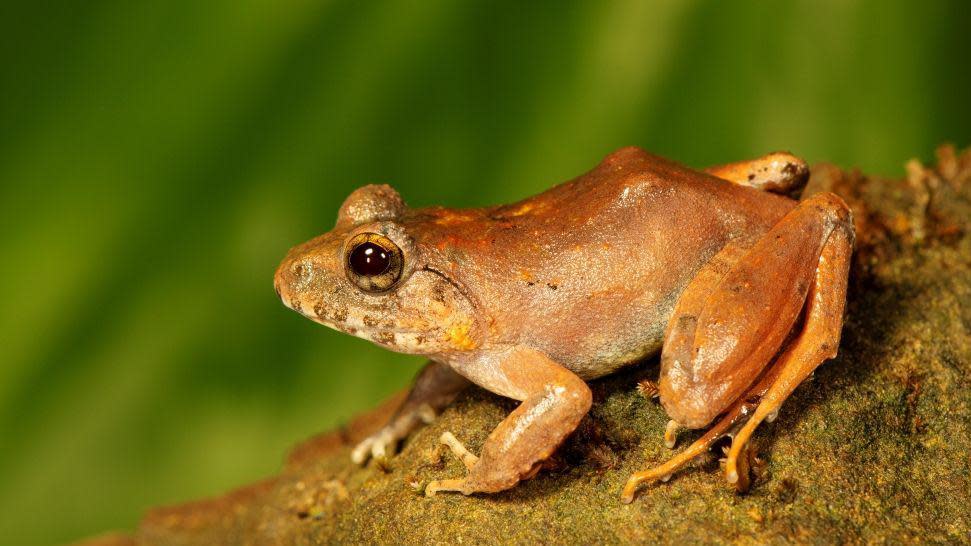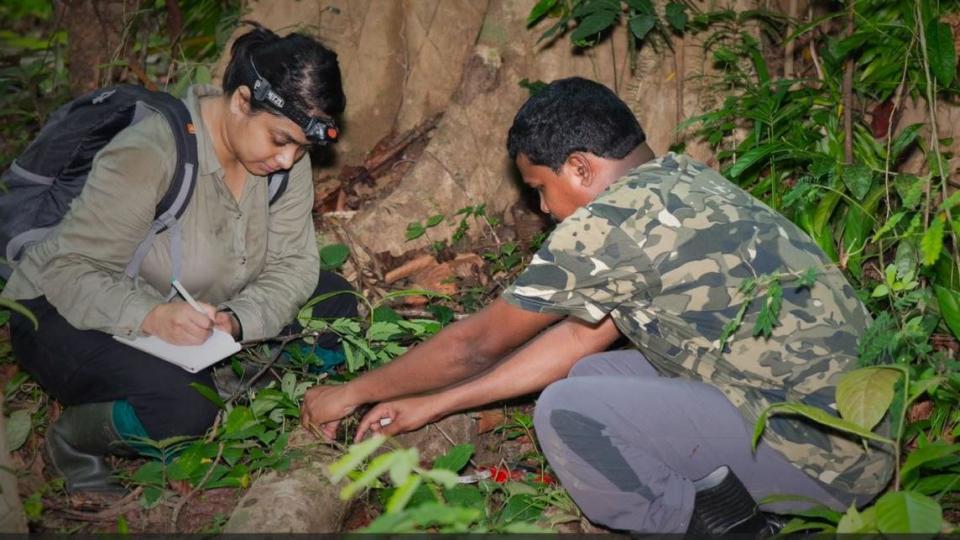The 'upside-down' sex life of a rare Indian frog revealed

In the islands of Andamans straddling India’s east coast, a species of frogs mate and lay their eggs while upside down, a new study has found.
Both the male and female Charles Darwin frogs position themselves upside down on the walls of tree cavities, with their bodies entirely out of water, scientists from India and the US say in their paper. Hatchlings drop into the water below and develop through a free-swimming tadpole stage.
“This is remarkable. Upside-down spawning is the most unique behaviour in this frog. No other frog is known to lay eggs on inner walls of tree holes in an upside-down posture with bodies completely outside water,” says SD Biju of the University of Delhi and currently a fellow at the Harvard Radcliffe Institute.
"This discovery is fundamental for understanding how this species interacts with its environments and which habitats are essential for its survival."
Nearly all the world’s 7,708 frog species mate and spawn in water and other terrestrial habitats. They also use external fertilisation: the female lays eggs during mating, while the male releases sperm to fertilise them.

A team of Indian and American biologists from the University of Delhi, Zoological Survey of India, Harvard University, and the University of Minnesota camped for 55 nights over three years during the monsoon rains to study the secretive reproductive behaviour of tiny Charles Darwin frogs in the remote Andaman islands. Their peer-reviewed study appears in the latest issue of scientific journal Breviora.
The uniqueness of the species doesn’t end with how they mate - even their mating calls are different.
Most frog calls are simple, single-type mating calls, though some species have complex calls with multiple types.
Researchers found that in their mating frenzy, the determined Charles Darwin males produce three types of “complex” calls to woo the females. When the “aggressive” calls fail to ward off competing males, they begin fighting – kicking and boxing, using hands and legs, and biting off body parts or even the entire head.
If the male successfully mounts a female, the bachelor males nearby may fight with the mating pair. They may even try to insert their head between the bodies of the pair to separate them, researchers found.
"In our observation these fights rarely lead to deaths. This was surprising considering the extent of aggression observed in this species, such as biting off body parts and even the entire head for long durations," says Mr Biju, who led the study.

"Also, all these fights are taking place in a small tree cavity filled with small quantities of rainwater, unlike in most other species where fights are known to occur in larger open water bodies. It is amazing how frogs have evolved such unique strategies," he adds.
The study suggests that upside-down mating behaviour evolved to prevent aggressive bachelor males from disrupting egg-laying by displacing the mating pair.
“This find is an example of the remarkable diversity of amphibians and reproductive behaviours that are still unknown to science, especially from unexplored regions in biodiversity hotspots of tropical Asia,” says James Hanken of Harvard University, who was part of the study.
The Charles Darwin frog, named after the famous naturalist, is endemic to a few islands in the Andaman islands and is not found anywhere else. It's uncommon and restricted to specific forest habitats and listed as "vulnerable" by the International Union for Conservation of Nature (IUCN) due to fragmented populations and habitat decline.
The scientists observed the frogs breeding in disturbed forests in artificial sites - from watered plastic sapling bags in neighbouring plant nurseries to rain-filled discarded containers left as trash at the edge of the forest.
“The frogs’ use of trash for breeding is both surprising and worrying. We now need to know its causes and long-term consequences, and devise ways to protect the natural breeding sites that are critical for survival of the species,” says Sonali Garg, a fellow at Harvard University who co-led the study.
The lack of adequate breeding sites due to habitat loss and competition for limited resources may be driving the frog to breed in such unnatural sites, say researchers.
Follow BBC India on YouTube, Instagram, Twitter and Facebook.

